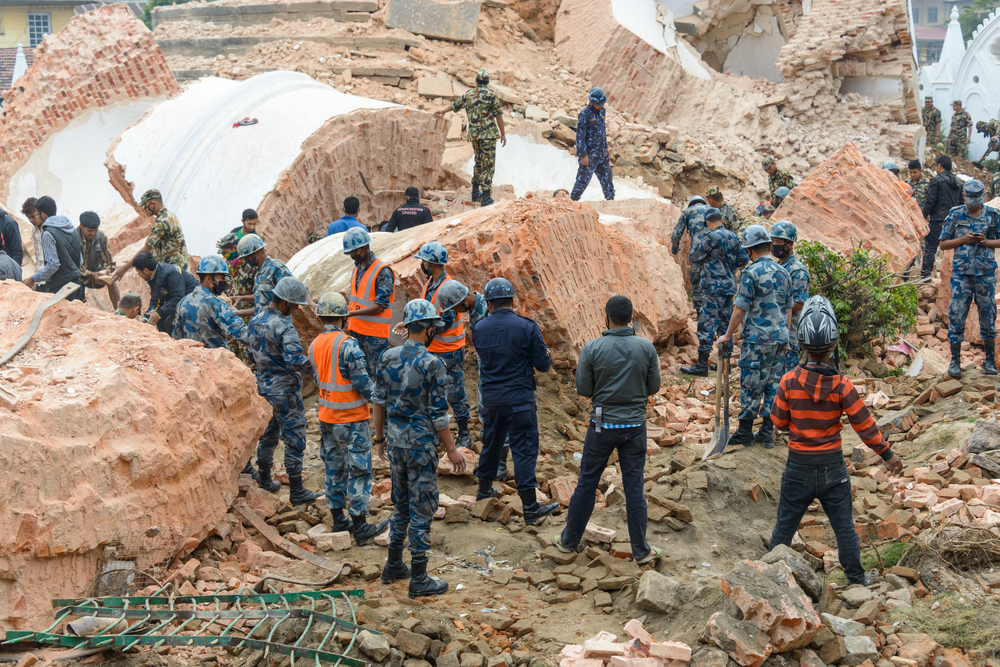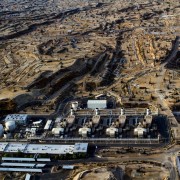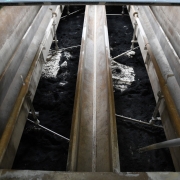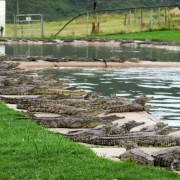Nepal Earthquake Damages Hydropower Dam
Near the earthquake epicenter, workers were rescued from a dam that is currently under construction by a Chinese company.

China is mounting an arduous mission today to rescue 250 workers who are trapped at a hydropower station, currently under construction near the epicenter of the earthquake that struck Nepal on April 25, according to Xinhua, the China Central Government news agency.
The China Three Gorges Company said on its website that the huge earthquake — which registered 7.9 on the Richter scale — caused serious damage to the 111-megawatt Rasuwagadhi hydropower station. With construction beginning two years ago, the dam is located 67 kilometers (41 miles) west of the quake’s epicenter. The company reported that two workers were killed in the quake and several were seriously injured.
On April 28, a child and 24 other people were airlifted by helicopter to nearby Jilung County in China’s Tibet Autonomous Region, according to the quake-relief headquarters in Jilung.
All roads to the dam are cut off, the company said in a statement, and food supplies are running low.
Meanwhile, the condition of two additional existing hydropower stations is not known, reported Hydroworld, an industry trade magazine, citing that the 144-megawatt Kaligandaki hydroelectric power station and the 22.1-megawatt Chilime hydropower plant “may have been affected, according to news reports from the area.” The two facilities have not been visited by inspectors.
Kaligandaki, Nepal’s largest hydropower plant, is about 300 kilometers (187 miles) west of Kathmandu near Mirmi in Syangja District. Chilime is in the district of Rasuwa, which is 133 kilometers (83 miles) north of Kathmandu.
Dangerous Mountain Terrain
The Nepal earthquake is the latest Himalayan disaster to damage the region’s hydropower infrastructure.
- A 2013 flood in Uttarakhand, India, killed thousands of people, buried villages in rubble, and severely damaged big hydropower dams in the Himalayan state.
- Last year, Nepal’s deadliest landslide in a decade caused destruction that knocked out 10 percent of the country’s hydropower-generating capacity.
Despite these events, leaders of China, India, and Nepal see in Nepal’s surging rivers and steep slopes ample opportunity to generate electricity from big hydropower projects.
In August, Narendra Modi became the first Indian prime minister to visit Nepal since 1997. While in Kathmandu, he negotiated an agreement to finance the construction of two transmission lines and to set up a project office for the 5,600-megawatt Pancheshwar hydropower station on the Mahakali River. The immense electricity-generating installation — close to two decades in planning and development — is more than twice the size of India’s largest operating hydropower project, the Tehri station in Uttarakhand.
“Nepal can free India of its darkness with its electricity,” Modi said.
Last year, Nepal also signed a foreign investment deal with GMR, an Indian construction company, to develop a 900-megawatt dam on the upper Karnali River. The project is expected to be completed by 2021.
Hydrologists and electrical engineers estimate that Nepal’s hydropower-generating capacity could total 84,000 megawatts at full build-out. As it is, the country generates less than 600 megawatts from its hydropower installations, which provide 93 percent of Nepal’s electricity.
For a nation of 29 million, that is a puny supply of power, and Nepal’s homes and businesses are frequently in the dark.
Circle of Blue’s senior editor and chief correspondent based in Traverse City, Michigan. He has reported on the contest for energy, food, and water in the era of climate change from six continents. Contact
Keith Schneider








Leave a Reply
Want to join the discussion?Feel free to contribute!